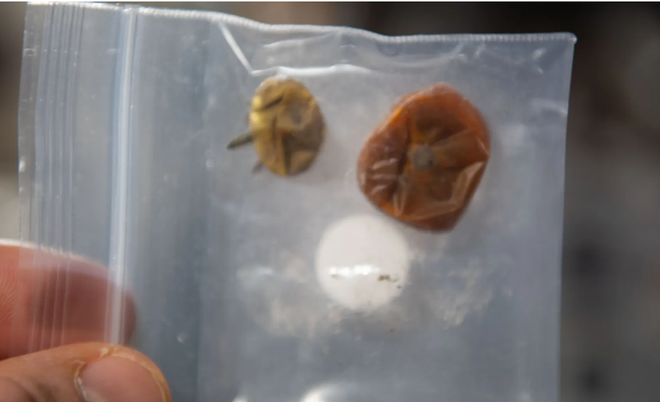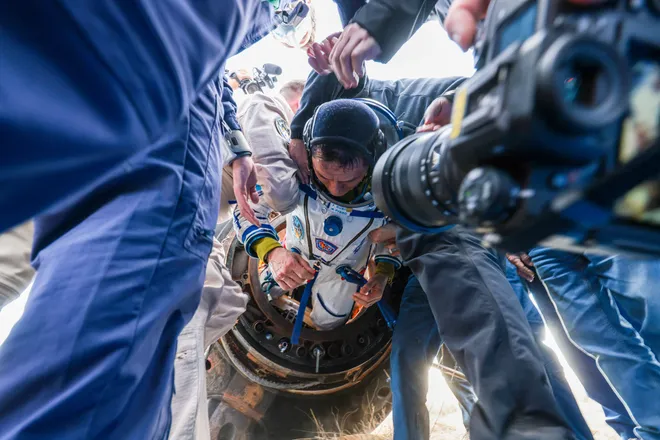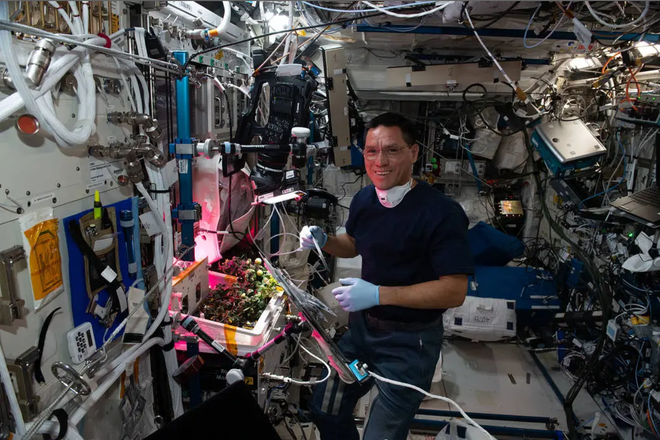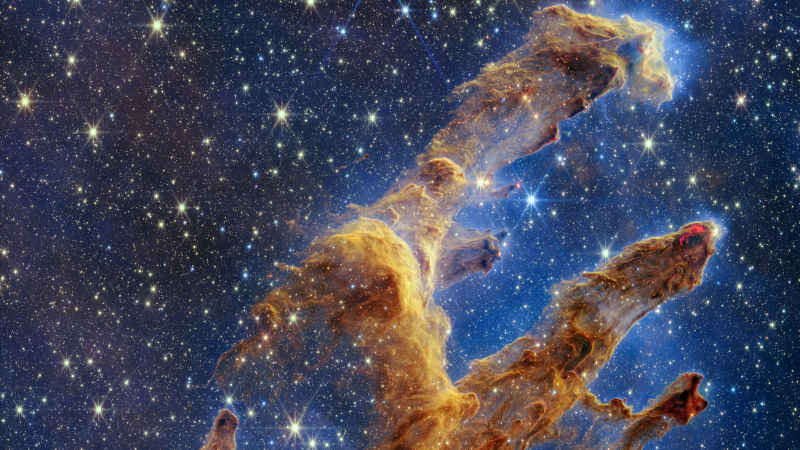Mold free: Tomatoes lost for 8 months on space station are missing something in NASA photo
Astronaut Frank Rubio may feel vindicated after produce that went missing on his watch was finally found aboard the International Space Station.
But many who learned about the news of the famed astronaut's exoneration may have been left with a burning question: What does a tomato that's been floating around in zero gravity for months actually look like?
Thanks to NASA, we finally have our answer. And in what may come as a surprising development, it's not one tomato in question, but two.

The space agency shared the photo last week, along with a detailed description of the experiment that ultimately led to the fresh harvest vanishing without a trace. They were Rubio's tomatoes, so he naturally took the blame – that is, until his fellow astronauts recently found the tomato remains and came clean.
"Other than some discoloration, it had no visible microbial or fungal growth," NASA said of the fruit, which was found in a plastic bag dehydrated and slightly squished.

'Message in a bottle:'Does NASA need a new Golden Record to communicate with extraterrestrials?
'I did not eat this tomato," Rubio says

NASA now says that Rubio accidentally lost track of the tomatoes while harvesting for the eXposed Root On-Orbit Test System (XROOTS) experiment he conducted in 2022 while aboard the space station. Previous media coverage has suggested the tomatoes were part of a different experiment, the VEG-05, conducted in 2023.
That means the tomatoes, which Rubio thought he stored in a bag, were much older than the eight months previously believed.
Rubio, who spent an American record-371 consecutive days in space, addressed the lighthearted scandal in a media briefing following his return to Earth in September.
"I was pretty confident I had Velcro-d it where I was supposed to Velcro it, and I came back and it was gone," Rubio said in the briefing. "I spent probably eight to 20 hours of my own time looking for that tomato; I wanted to find it mostly so I could prove, 'Ok, I did not eat this tomato.'"
Rubio, a former Army doctor and helicopter pilot, figured the fruit had desiccated to the point where someone mistook it for trash and threw it away. But somehow, the tomatoes were able to survive in a bag for nearly a year before other space station crew members found them, according to NASA.
NASA crewmembers aboard the station admitted as much when they took part in a livestreamed event earlier this month to celebrate the International Space Station's 25th anniversary.
"Our good friend Frank Rubio who headed home has been blamed for quite awhile for eating the tomato," astronaut Jasmin Moghbeli said while sharing a laugh with her crewmates. "But we can exonerate him: we found the tomatoes."
Rubio took part in tomato growing experiments
The rogue tomatoes were part of an experiment using hydroponic and aeroponic techniques to grow plants without soil in an effort to find solutions for plant systems on future space missions.
It's just one of many research projects that has taken place aboard the space station that has helped scientists to understand how to grow small crops in space, according to NASA. Such work also could improve plant growing techniques for food harvested here on Earth, the agency says.
It's not the only produce-growing experiment that Rubio took part in during his year on the space station. Rubio was also part of the VEG-05 study, which aimed to address the need for a continuous fresh-food production system in space by using the station's veggie facility to grow dwarf tomatoes.
The research team studied the impact of light quality and fertilizer on fruit production, microbial food safety, nutritional value and taste.
As for the rogue rogue tomatoes found from the XROOTS experiment, NASA said they were discarded. But while we finally know what the tomatoes in question looked like, those waiting for NASA to disclose where exactly produce was found may have to wait a little longer.

Eric Lagatta covers breaking and trending news for USA TODAY. Reach him at elagatta@gannett.com
Disclaimer: The copyright of this article belongs to the original author. Reposting this article is solely for the purpose of information dissemination and does not constitute any investment advice. If there is any infringement, please contact us immediately. We will make corrections or deletions as necessary. Thank you.




